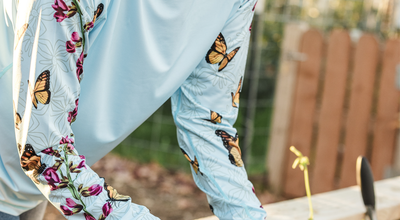Gardening for the Environment: 5 ways gardening can benefit the environment
Pollinator Sanctuary
In the big, scary world of pesticides and dwindling green spaces, a home garden can become a sanctuary for invaluable pollinators, like bees and butterflies, fighting to keep their species alive. We all know pollinators are in grave danger, and it often feels like the problem is entirely out of our control; it’s not! Planting wildflowers, or even just letting a couple of weeds go to flower, can create a floral feast for the hardworking bees that ensure we have fruits and vegetables on our plates.

A home garden doesn’t usually consist only of a few wildflowers and weeds but a wide variety of fruits and vegetables, herbs, and grains that produce flowers that pollinators can feed on. Homegrown fruits and vegetables depend on bees for pollination. No bees mean no fruit. That’s why gardeners often have many practices that attract pollinators to their gardens, like planting flowers full of nectar that calls the bees from miles away to placing small water dishes throughout the park for them to drink from in the heat of the day. As you can see, gardening depends on pollinators, and gardeners strive to support their populations.
Composting
Throwing food and plant waste into ordinary trash bags that end up in landfills releases methane, a greenhouse gas that has terrible effects on the environment. The best way to keep food and plant waste from contributing to carbon emissions is to utilize it somehow so that it does not end up rotting. Composting is the best way to do this. Not only does composting reduce your carbon emissions, but the result is also a super-rich fertilizer that can be used to feed the plants in your garden. Gardeners that make their own compost reduce their emissions of greenhouse gasses and make their own fertilizer. Compost is so rich in nutrients that many gardeners don’t need to buy fertilizers for their gardens.
Reduce CO2 and increase O2
We all know plants take up carbon dioxide and release oxygen; our big environmental challenge now is reducing carbon emissions. So planting plants is an obvious way to reduce our carbon footprint. There are some plants, however, that do a much better job at trapping carbon than other plants. The Snake plant (Sansevieria zeylanica) is so good at trapping carbon and producing oxygen that you can breathe normally in a sealed room with a healthy snake plant. Other plants that are great at trapping carbon include aloe vera, orchids, and bamboo.

Protect wildlife
A small garden can become a rich ecosystem full of natural wildlife, and a healthy garden is home to many creatures, great and small. From birds to butterflies, lizards, frogs, bees, and wasps, a few plants can be the start of a diverse food web. As all gardeners know, where there are plants, there are insects. These insects become the primary food source of larger animals like chameleons and flycatchers. Planting a garden not only protects pollinators and insects but becomes a nourishing food source for surrounding wildlife.

Cool the planet
You can feel the cooling power of plants by sitting in the shade of a tree on a hot summer's day. Since plants can’t just get up and move out of the hot summer sun, they have developed many unique techniques to cool themselves and their environment down. Lots of plants growing together has the potential to decrease the air temperature, so gardens are like a city or a town’s air conditioner.












